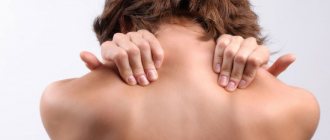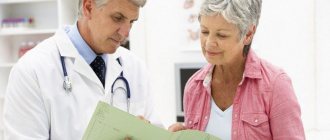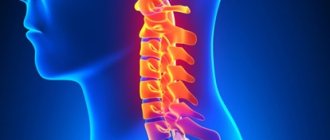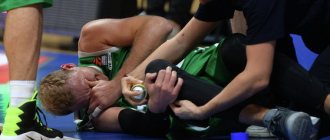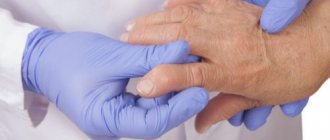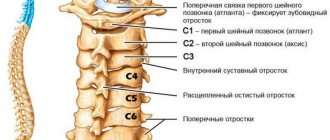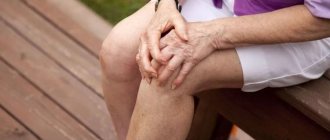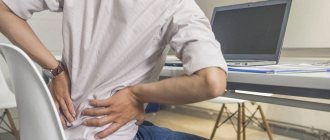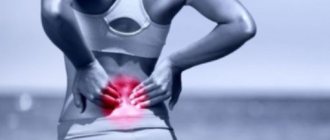Back pain, accompanied by a crunching sound when turning the body or head, is attributed by many people to the deposition of salts in the spine and is not considered a dangerous disease. Some completely ignore this condition, putting up with the discomfort, others use folk remedies, which, unfortunately, do not always have a positive effect. So, what do these symptoms actually indicate, can salt accumulate in the back, and how to deal with it?
Salt in the back
What is salt deposition
What is popularly called salt deposition is called calcification (calcification) in medicine, and experts attribute it to diseases of a degenerative-dystrophic nature. Calcification, also called calcification, is the accumulation of salts in tissues - connective and cartilaginous. Structural changes occur in them, leading to loss of elasticity and functional characteristics. That is, these tissues become thinner, become fragile and vulnerable to any negative impact. Calcinosis can affect a variety of areas of the body and internal organs, but most often it is localized in the spine.
The deposition of calcium salts on the intervertebral discs can lead to complete immobilization of the spine
Microscopic crystals of salts accumulate in the discs and ligaments of the spine. When ligaments are damaged, areas appear in the thickness of the fibers where the connective tissue is replaced by salt formations. When moving, sharp crystals injure nearby healthy fibers and nerve roots, which causes attacks of pain. The more such areas, the stronger the pain.
When a disc is damaged, calcification can affect all its parts, but is most often observed in the fibrous membrane. Salts gradually destroy cartilage tissue, as a result of which the discs lose their elasticity and height, and microscopic tears form in the fibrous ring. Due to the absence of nerve endings in the discs, pain appears only after the vertebrae begin to hit each other and injure nearby tissues, or an intervertebral hernia forms.
Destruction of the intervertebral disc leads to the formation of a hernia, which is manifested by back pain
Calcification of the spine is a serious pathology and threatens many health complications, but the worst thing is that this process is irreversible. With the help of comprehensive therapeutic measures, it is possible to stop the progression of the disease and minimize its manifestations, but it is no longer possible to completely restore the structure of damaged tissues. That is why it is so important to identify the pathology in a timely manner and prevent it from reaching an advanced stage.
Very often, calcification is accompanied by the proliferation of bone tissue of the vertebrae, in which irregularly shaped growths are formed along the anterior edge. This condition is a separate disease - spondylosis, leading to a sharp limitation of the mobility of the spine. If calcification affects the intervertebral joints, this is already spondyloarthrosis - an equally serious and dangerous pathology. These diseases are chronic and can develop for years before pronounced symptoms appear and the person is given an accurate diagnosis.
Salt deposition may be one of the manifestations of chronic pathologies of the spine - osteochondrosis, spondylosis or spondyloarthrosis
Prevention
- Swimming in a pond or pool.
- Reducing the risk of obesity.
- Frequent changes of position and warm-up during sedentary work.
- Even distribution of load on both hands.
- Warmth for the lower back.
- Elimination of drafts.
- Squatting when lifting weights so that the main load falls on the legs.
- Avoid sudden movements.
- Gymnastics.
When performing household and country work on an incline (washing, sweeping, chopping and sawing firewood, digging, hilling, etc.), it is important not to overload and what can be done on your knees or squatting, do exactly that. After work, it is useful to lie on your back, bend your knees and move your buttocks, as if rolling them back and forth, and only then stretch your legs and relax your lower back
,neurologist, top blogger of LiveJournal
Pain in the back and neck, crunching in the spine, painful tightness in the muscles - all this is considered to be a manifestation of “salt deposition” in the spine. Like, I used a lot of salt - and this is the result.
In fact, official medicine has long ceased to consider table salt to be the cause of any disease. Some studies show that strict salt restriction is not required even for hypertensive people: a moderate amount of sodium chloride is necessary for every person, and people with low blood pressure intuitively often prefer to eat salty foods simply because it helps them maintain a tolerable state of health.
The idea of “salt deposits” in the spine originates from centuries-old medicine. When the doctor had only X-ray methods of research for back pain, the first ideas about osteochondrosis were formed. Images of adults revealed various growths on the vertebrae, narrowed intervertebral spaces, signs of changes in the joints of the spine, and sometimes deposition of calcium salts in the ligaments. At first, doctors took all this as undeniable signs of illness. This is how the myth about osteochondrosis appeared: “If there are changes on the x-ray of the spine, it means the patient is seriously ill.”
Only then did new information begin to accumulate. And gradually the understanding came that the spine of all people changes with age. This occurs due to age and is not necessarily a sign of illness. Therefore, an X-ray of the spine for back pain has gone from being a mandatory examination to a rather rarely used method. It is prescribed only if there is a suspicion of injury or complications of osteoporosis (loss of bone matter)
And age-related changes, which the radiologist describes from the image as “osteochondrosis,” are practically not taken into account by modern doctors
Causes of the disease
Metabolic disorders play a major role in salt deposition. During normal metabolism, excess calcium salts dissolve and are eliminated from the body naturally. If there is a violation of calcium-phosphorus metabolism, the concentration of salts increases and excretion decreases, which leads to the formation of deposits. The following factors can provoke metabolic disorders:
- back injuries;
- hypothermia;
- poor nutrition;
- hormonal imbalances;
- excessive stress on the back;
- physical inactivity;
- infectious diseases;
- age-related changes.
Physical inactivity and excess weight significantly increase the risk of salt deposits in the back
Important! Most often, salt deposition is observed in people after 40 years of age, as well as in those who engage in heavy physical labor.
Physiotherapy
Gymnastics and physical therapy are very important methods of recovery. Properly selected gymnastic exercises can reduce pain, improve mobility, and enhance tissue nutrition.
Here are some simple exercises:
- Sit on a chair, keep your back straight, and pull your stomach in. Stretch as high as possible with one arm, then the other. You should stretch smoothly, without jerking. Repeat 15-20 times for both hands.
- Take a supine position. Legs are bent at the knees. Roll several times from one side to the other.
- For the next exercise you will need a horizontal bar, a wall bars or, in extreme cases, a protruding door frame. Hang for 5 seconds to start. Gradually increase the time. But not through force.
Main manifestations
Early diagnosis helps prevent complications caused by calcification. But how can you determine that salts are deposited in the spine? The whole difficulty is that at an early stage the symptoms are absent or appear so weakly that many simply do not attach importance to them. The first characteristic signs appear later, when calcification affects a significant part of the ligaments or intervertebral discs.
Common symptoms include:
- aching dull pain in the affected part of the spine;
- crunching when turning or tilting the head or body;
- decreased back mobility.
Typical symptoms of salt deposits are dull pain in the back and crunching when turning the body.
If the upper part of the spine is affected, additional symptoms occur:
- headaches and dizziness;
- pressure changes;
- tinnitus, blurred vision;
- loss of sensation in the hands.
The severity and nature of the manifestations also depends on which ligament is damaged - the anterior, posterior or short yellow one.
Table. The relationship between symptoms and localization of deposits
| Affected area | Clinical symptoms |
| Anterior longitudinal ligament | Dull pain at the site of salt accumulation, accompanied by muscle tension. Feeling of stiffness in the back, short muscle spasms, impaired skin sensitivity. In the advanced stage, atrophy of the spinal muscles occurs, sensitivity is impaired, and the person’s gait changes. Distinctive features: absence of irradiation of pain, decrease in symptoms after rest and intensification during the day, localized pain. |
| Posterior longitudinal ligament | Feeling of pain in the affected area, weakness of the back muscles, feeling of stiffness when moving. The presence of deposits causes a decrease in the clearance between the vertebrae and, as a result, compression of nerve fibers and blood vessels. This causes additional symptoms - shooting pain in the back, sensory disturbances, and dizziness. |
| Ligamentum flavum | Dull pain that occurs mainly at night and intensifies in the morning, limited mobility, severe discomfort in the back when walking, caused by the loss of shock-absorbing properties of the spine. In an advanced stage, calcification of the yellow ligaments can lead to vertebral fusion. |
In case of extensive damage, salt deposits can be detected visually and by touch: small tubercles appear under the skin, and swelling may be observed. Even a light touch to such areas causes pain.
Large salt deposits can be felt when palpating the painful area
How to recognize a violation
A large number of patients come to doctors with complaints of salt deposits in the back, or rather, spondylosis. What is the peculiarity of the formation of the disease?
With age, the discs located between the vertebrae wear out, so the latter are forced to take on the maximum load. Gradually, so-called osteophytes are formed along the edges of the vertebrae, which people unknowingly call salts.
At the initial stage, the disease often does not manifest itself at all. Later the patient encounters:
- pain in the area that was affected;
- limited mobility;
- gait changes;
- crunching at the moment when a movement is performed with the body or neck.
You can recognize osteophytes in the thoracic region by the characteristic painful sensations in this area. When the lower back is affected, the resulting pain radiates to the groin area, buttocks or to the upper part of the spine.
- pain in the area that was affected;
- limited mobility;
- gait changes;
- at the moment when a movement is performed with the body or neck.
- ;
- X;
- ;
- numbness of hands;
- problems with coordination;
- fainting (occasionally).
You can recognize osteophytes in the thoracic region by the characteristic painful sensations in this area. When the lower back is affected, pain occurs in the buttocks or in the upper part of the spine.
- headaches;
- tinnitus;
- blood pressure fluctuations;
- numbness of hands;
- problems with coordination;
- fainting (occasionally).
You can recognize osteophytes in the thoracic region by the characteristic painful sensations in this area. When the lower back is affected, the resulting pain radiates to the groin area, buttocks or to the upper part of the spine.
Diagnosis of the disease
Salt deposition often occurs against the background of other spinal pathologies, so it is impossible to make an accurate diagnosis based on symptoms. But even if the doctor determines the presence of salts in the back, the extent of the damage can only be assessed with the help of hardware tests.
Salt formations on the ligaments and surface of the vertebrae are clearly visible on an x-ray, and in most cases, x-ray examination is sufficient to make a diagnosis. To get the clearest possible image of problem areas, the patient must be in an upright position during the procedure, and pictures are taken in different projections.
Salt deposits in the spine can be detected using x-rays
Important! If discs are affected, magnetic resonance imaging or computed tomography is recommended. Such a study allows us to identify the slightest structural changes, even at an early stage. Additionally, electromyography, scanning of blood vessels of the circulatory and lymphatic system, and ultrasound examination may be prescribed.
Physiotherapy
To increase the effectiveness of treatment and eliminate the risk of recurrent disease, physiotherapeutic procedures are prescribed:
- Electrophoresis. Electric current ions are directed to the area of maximum salt accumulation. Standard components are mixed with Novocain. If emergency pain relief is necessary, use Eufillin, when the purpose of the procedure is to normalize blood flow.
- Ultrasound has an anti-inflammatory effect, relieves pain in the affected area, and normalizes metabolic processes.
- Magnetic therapy is performed for severe tissue swelling and helps relieve pain.
- Laser therapy reduces inflammation and normalizes blood circulation.
Carrying out a laser therapy procedure
Treatment options
To guarantee relief from pain and prevent relapse of the disease, you should try to identify the cause of salt deposits in the back. Without eliminating the cause, the relief will have a short-term effect, and very soon the pain will return. So first you need to analyze your diet and lifestyle, give up bad habits.
You need to start by revising your lifestyle and giving up bad habits.
Treatment is carried out in several directions at once: improving blood supply to tissues, restoring muscle tone, relieving pain, and activating regenerative processes in intervertebral discs. To achieve this, the following techniques are used:
- massotherapy;
- exercise therapy classes;
- physiotherapy;
- drug treatment;
- manual therapy.
The use of folk remedies is allowed, but after mandatory consultation with your doctor.
Drug treatment
For calcinosis, spondylosis, spondyloarthrosis and other diseases associated with degenerative changes in the spine, drugs with glucosamine, collagen and chondroitin are prescribed. These substances take an active part in the regeneration of bone, connective and cartilage tissue, thanks to which it is possible to stop the progression of pathology and restore, at least partially, the functions of ligaments and intervertebral discs. For acute pain attacks caused by tissue inflammation or pinched roots, drugs with anti-inflammatory and analgesic properties are additionally prescribed.
Table. Preparations for salt deposits in the back
| Name | Characteristics |
| "Aflutop" | Contains chondroitin sulfate, has an analgesic and anti-inflammatory effect. Quickly restores motor activity and stimulates tissue regeneration. It is used in the form of injections. |
| "Reopirin" | Belongs to the group of NSAIDs, prescribed to relieve pain and inflammation in the affected joints. In the acute stage, it is used in the form of intramuscular injections, and for moderate pain - in the form of tablets. The drug has serious contraindications, and therefore it can only be taken as prescribed by a doctor. |
| Contains chondroitin sulfate. Effectively helps eliminate pain, stops the progression of the disease, improves the regenerative properties of cartilage and connective tissue. |
| "Don" | Contains glucosamine sulfate. Eliminates pain, normalizes metabolism in cartilage, stimulates the restoration of affected tissues. |
Chondroprotectors are taken in long courses, the exact duration of which is determined by the doctor based on the results of the examination.
Instructions for use of aflutop
Physiotherapy
When salts are deposited, the same set of exercises is prescribed that are used for osteochondrosis. The main condition is a gentle load on the spine, that is, it is necessary to exclude sharp turns, jerks, tilts of the body and head, which can injure soft tissues. To prepare and warm up the muscles, you should start exercising with a warm-up, and only then proceed to the main part. The first classes should last no more than 15-20 minutes, in the future it is recommended to increase this time to 30-40 minutes. It is recommended to perform the exercises daily until the condition improves as much as possible, then 2 sessions per week will be sufficient as a preventive measure.
Exercises will help get rid of salts in the back and eliminate pain
Therapeutic exercise has contraindications:
- acute phase of the disease, accompanied by severe pain;
- the presence of inflammation in the body;
- severe pathologies of the heart and respiratory organs.
In order not to harm yourself, you should engage in exercise therapy only with the permission of a doctor, strictly adhering to his prescriptions.
Video - Exercises for neck pain
Massage
Massage is the most effective way to remove salt deposits in the back. Proper impact on problem areas helps to increase the outflow of lymph, which removes not only waste and toxins from the body, but also calcium salts. Additionally, massage helps improve blood supply to tissues, increase the elasticity of muscles and ligaments, and increase the overall tone of the body. The procedure must be carried out by a qualified specialist, especially in the presence of large deposits, since any careless pressure can lead to microtrauma of the soft tissues and provoke inflammation.
Therapeutic massage helps reduce deposits and remove salts from the body
As a rule, for a stable improvement of the condition, one massage course of 12-15 sessions is enough. The duration of the first procedures should not exceed 20 minutes; the duration of subsequent sessions depends on the severity of the disease.
Massage is contraindicated if:
- there are acute inflammatory processes in the body;
- there are skin lesions on the back;
- there are complaints of sudden changes in blood pressure;
- there is severe pain in the back;
- a person has been diagnosed with tuberculosis or cancer.
Massage is contraindicated for acute back pain
Along with the massage, it is allowed to use warm compresses and rubbing, but, of course, only after consulting a doctor. Not all folk remedies are safe and effective, so you should first get the opinion of a specialist.
Folk remedies for salts in the back
Folk remedies
Traditional medicine cannot replace traditional methods of treatment, but it can stimulate recovery. To combat salt deposits, there are a lot of folk recipes; let’s look at a method that helps eliminate pain.
Alcohol-based products can only be used on areas of the skin without damage. If there is even the slightest violation of the integrity of the skin (abrasions, scratches), you must wait until they are completely healed.
Compress
In folk medicine there are also many recipes for compresses that help treat salt deposits. One of the simplest and at the same time effective is a potato-honey compress. To prepare it, grate about 50 grams of fresh potatoes onto a fine grater and mix it with 50 grams of honey.
Remember, to fully combat salt deposits in the cervical spine, an integrated and systematic approach is important. In addition, treatment cannot be carried out independently; it is necessary to consult a doctor, who must prescribe each drug, monitor the progress of treatment and make adjustments.
When nerve fibers, endings, and blood vessels are compressed as a result of salt deposition, many unpleasant syndromes may develop. To improve the prognosis of the disease in advance, it is necessary to use common folk remedies.
Rubbing
This folk remedy has been used for a long time. With its help you can quickly relieve pain and reduce inflammation.
Required components:
- alcohol – 150 ml;
- iodine and camphor alcohol – 5 ml;
- analgin – 5 tablets.
Components for grinding
Pine buds
If you use the prescription constantly, you can speed up the onset of remission. Initially, you need to collect pine buds that are less than 2 cm long. Follow these steps:
- Cut all the raw materials into small pieces, place them in a convenient container, add sugar in a 2:1 ratio to the main component.
- Allow the medicine to infuse for two weeks. The mixture can be used when it turns an amber color.
- Use the medicine 3 times a day. A single dose is 5 ml. Do not swallow the medicine; just leave it in your mouth for a few minutes.
Pine buds for the treatment of salt deposits in the cervical region
The course of treatment is 3-4 weeks. Improvement occurs within 3-5 days.
Helps quickly relieve pain and restore tissue. You need to mix 50 grams of raw potatoes with the same amount of honey. The resulting mixture is placed in a clean cloth and applied to the area in which discomfort is felt.
To remove salt deposits in the cervical region, it is necessary to use a complex of medications. If traditional methods help, use them regularly. If the general condition worsens, medications, physiotherapy, and a set of physical exercises aimed at normalizing the condition of cartilage, nervous and bone tissue will be required.
Preventive measures
These techniques will help get rid of discomfort and pain, but they cannot provide long-term results if you do not adhere to certain rules:
- it is necessary to adjust the diet, excluding dishes high in fat, salt, and flavorings. The daily menu must be balanced so that the body receives a sufficient amount of microminerals and vitamins;
A balanced diet is an important condition for normal metabolism in the body. - physical activity should be regular but moderate, that is, excessive stress on the back and joints should be avoided. The best way to prevent back diseases is swimming. Exercising in the pool at least twice a week will allow you to maintain excellent physical shape and forget about pain in the spine for a long time;
Swimming is considered one of the most effective methods for treating spinal diseases. - You should also avoid hypothermia and pay more attention to health. You should not ignore the symptoms, even if they do not yet cause much discomfort.
If you follow these simple recommendations, you can forget about back problems. The main thing is to take care of your body and listen to it carefully, so that later you don’t have to spend all your energy and time fighting diseases.
Video – Salt in the back
Salt deposition in the back is usually associated with the development of osteochondrosis, a pathology that poses a serious threat to the health of the spine. How osteochondrosis manifests itself and which methods are most effective in its treatment can be read on our website.
ethnoscience
- Before going to bed, it is good to warm up the painful area under running water, quickly wipe off, spread with honey and rub in with light movements. Then cover with compress paper and woolen cloth. In the morning, rinse off the honey with warm water. 2-5 procedures are enough to relieve pain.
- Take a piece of Indian onion or golden mustache, chop it, and rub the resulting pulp on the sore spot. Do not tie anything, otherwise you may get burned.
- Consume fresh parsley three times a day for a month.
- Mix a glass of alcohol with a teaspoon of camphor alcohol, an iodine ampoule and 10 analgin tablets. Let it sit for 24 hours and rub overnight.
- At night, dip a fresh leaf of horseradish in boiling water, place it along the spine, cellophane and woolen cloth on top. In the morning, remove everything.
- Bath with chamomile or knotweed. Brew 300 gr. herbs, strain and pour into a bath of water. Take a bath twice a week.
Today there are many pharmaceutical external remedies. The ointment should be rubbed in for 3-5 minutes, then wrapped. You need to repeat the procedure 2-3 times a day. Ideally, if it is possible to cover the smeared area with leaves of burdock, cabbage, mint, and sage.
Traditional medicine, as well as traditional medicine, advises losing excess weight and moving more. You need to do flexibility exercises and strengthen your spinal muscles every day, watch your posture, sleep on a medium-hard mattress and eat well.
Spondylosis - clinics in
Choose among the best clinics based on reviews and the best price and make an appointment
Family
Scoliosis Treatment Center named after K. Schroth
Moscow, st.
Azovskaya, 24, building 2 POM VI/KOM 5,6,7/ET 1 Sevastopolskaya
+7
- Consultation from 1500
- Exercise therapy from 2700
0 Write your review
Family
Oriental Medicine Clinic "Sagan Dali"
Moscow, prosp.
Mira, 79, building 1 Rizhskaya
+7
- Consultation from 1500
- Diagnostics from 0
- Reflexology from 1000
0 Write your review
Family
Center for Chinese Medicine "TAO"
Moscow, st.
Ostozhenka, 8 building 3, 1st floor Kropotkinskaya
+7
- Consultation from 1000
- Massage from 1500
- Reflexology from 1000
0 Write your review
Show all Moscow clinics
Why does my back hurt?
90% of back pain comes from the muscles. Discomfort can occur as a result of hypothermia, sudden effort, or prolonged stay in one position. Sometimes muscle spasms develop as a reaction to stress. Other sources of pain may be spinal ligaments and facet joints, and less commonly, nerve roots and other structures.
The back cannot hurt from “salt deposits” simply because there are no pain receptors in the vertebrae themselves. Anything that “grows” on the spine can cause pain only when it compresses the surrounding tissues: ligaments, muscles, blood vessels, nerves. And this does not happen very often, usually as a result of vertebral fractures.
Spondylosis - specialists in Moscow
Choose among the best specialists based on reviews and the best price and make an appointment
VertebrologistOrthopedist
Gromov Ilya Sergeevich
Moscow, st.
Azovskaya, 24, building 2 POM VI/KOM 5,6,7/ET 1 (Scoliosis Treatment Center named after K. Schroth) +7 Registration
0 Write your review
VertebrologistOrthopedist
Kudryakov Stepan Anatolievich
Moscow, st. Azovskaya, 24, building 2 POM VI/KOM 5,6,7/ET 1 (Scoliosis Treatment Center named after K. Schroth)
+7
Registry
0 Write your review
Orthopedist
Recovery prognosis
The result of treatment of salt deposits directly depends on the severity of the disease . The sooner treatment is started, the greater the chances of a full recovery.
Long-term treatment, which includes all measures of complex therapy, can bring positive results with a competent approach to treatment. Not only should you take medications, but you also need to make a lot of effort to do regular exercise, you should completely change your diet, and eliminate bad habits.
